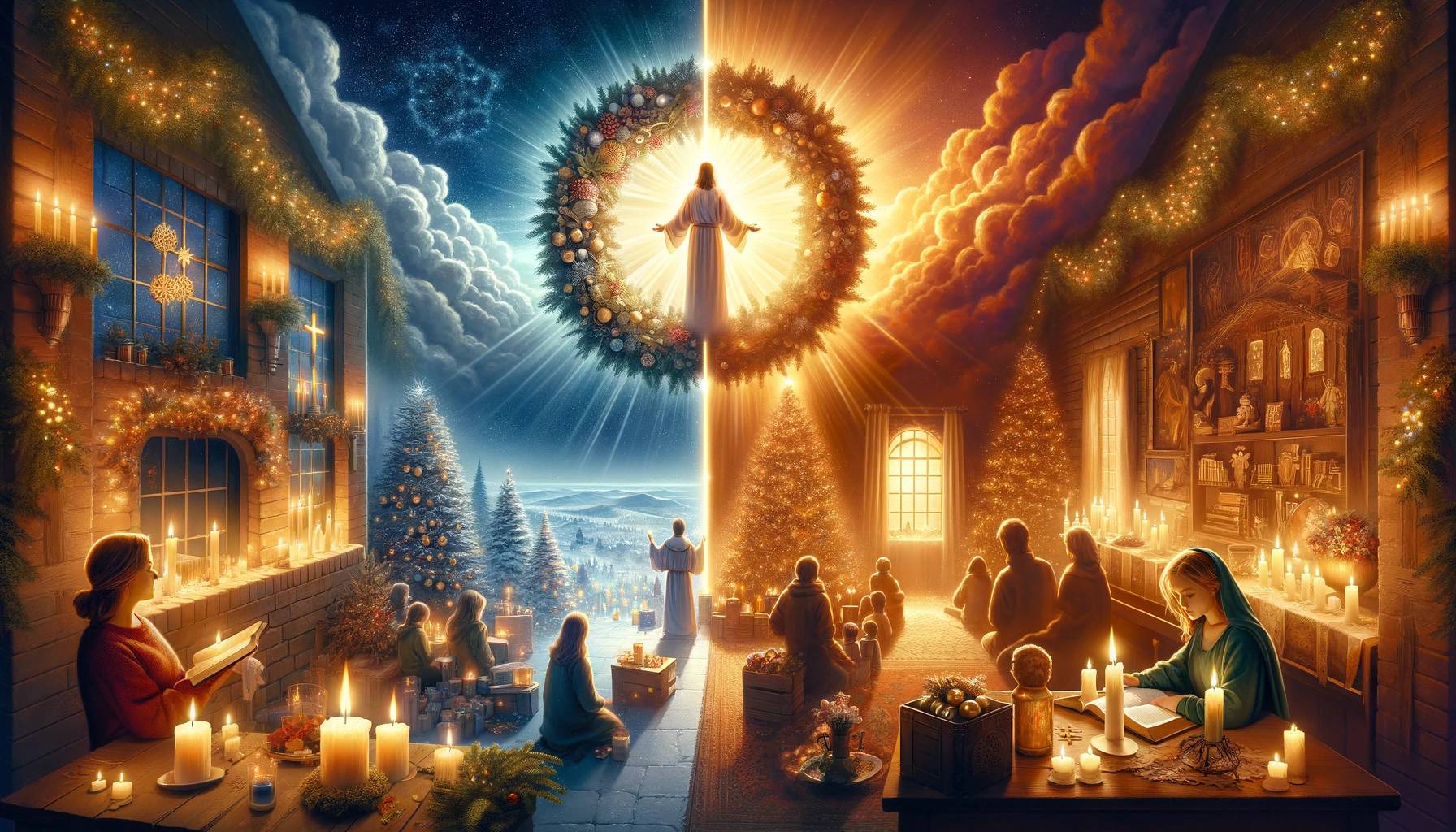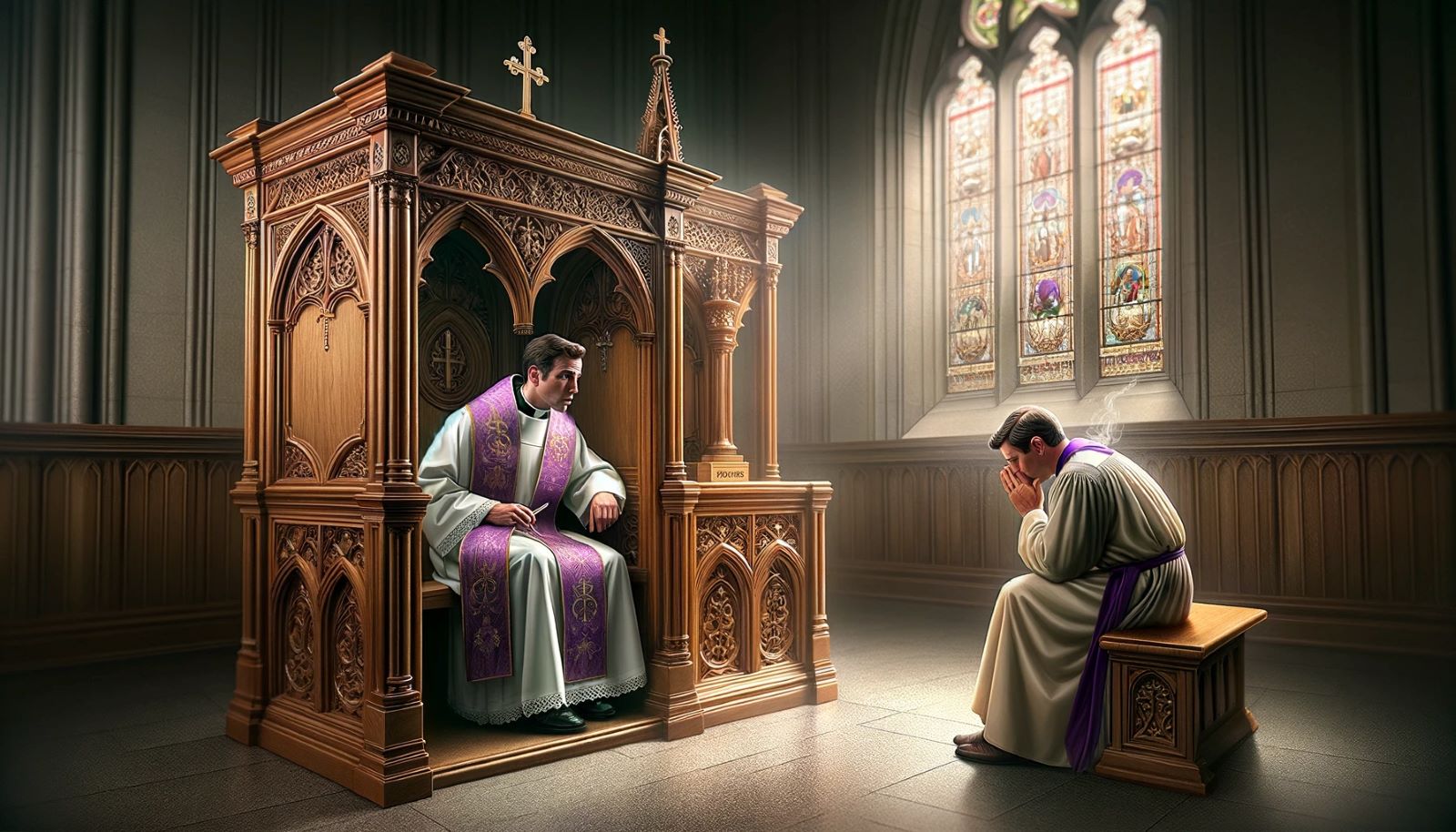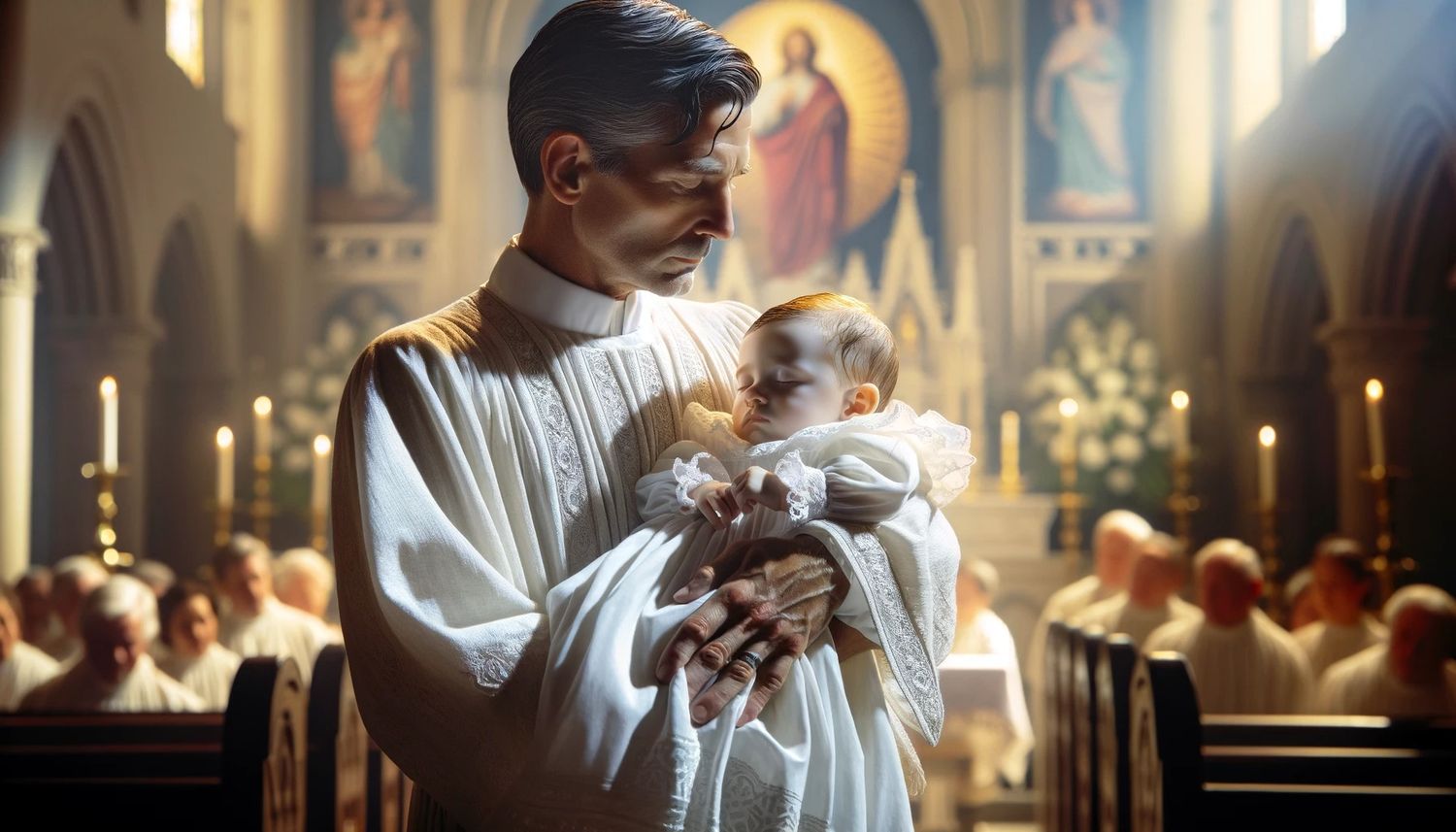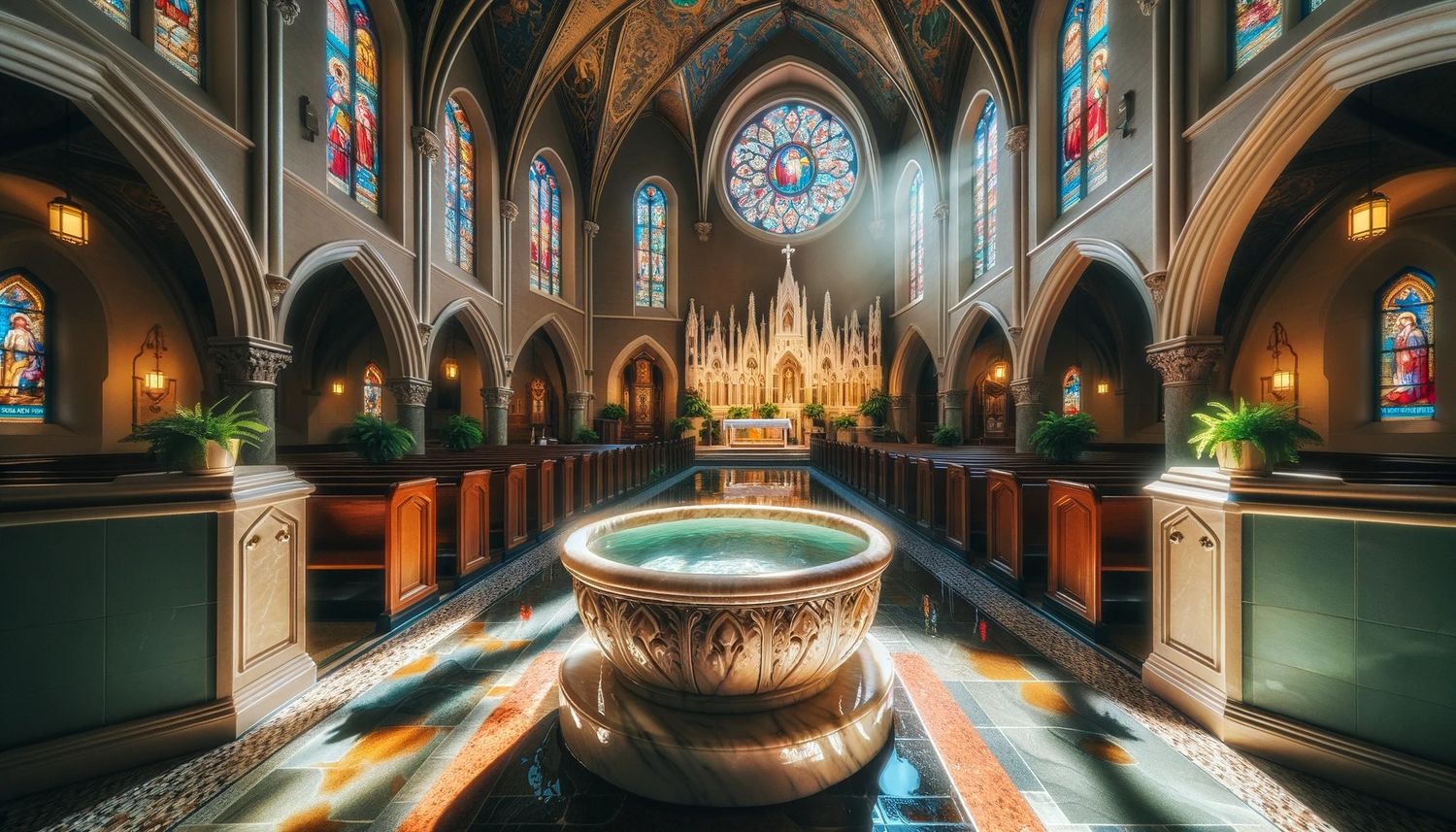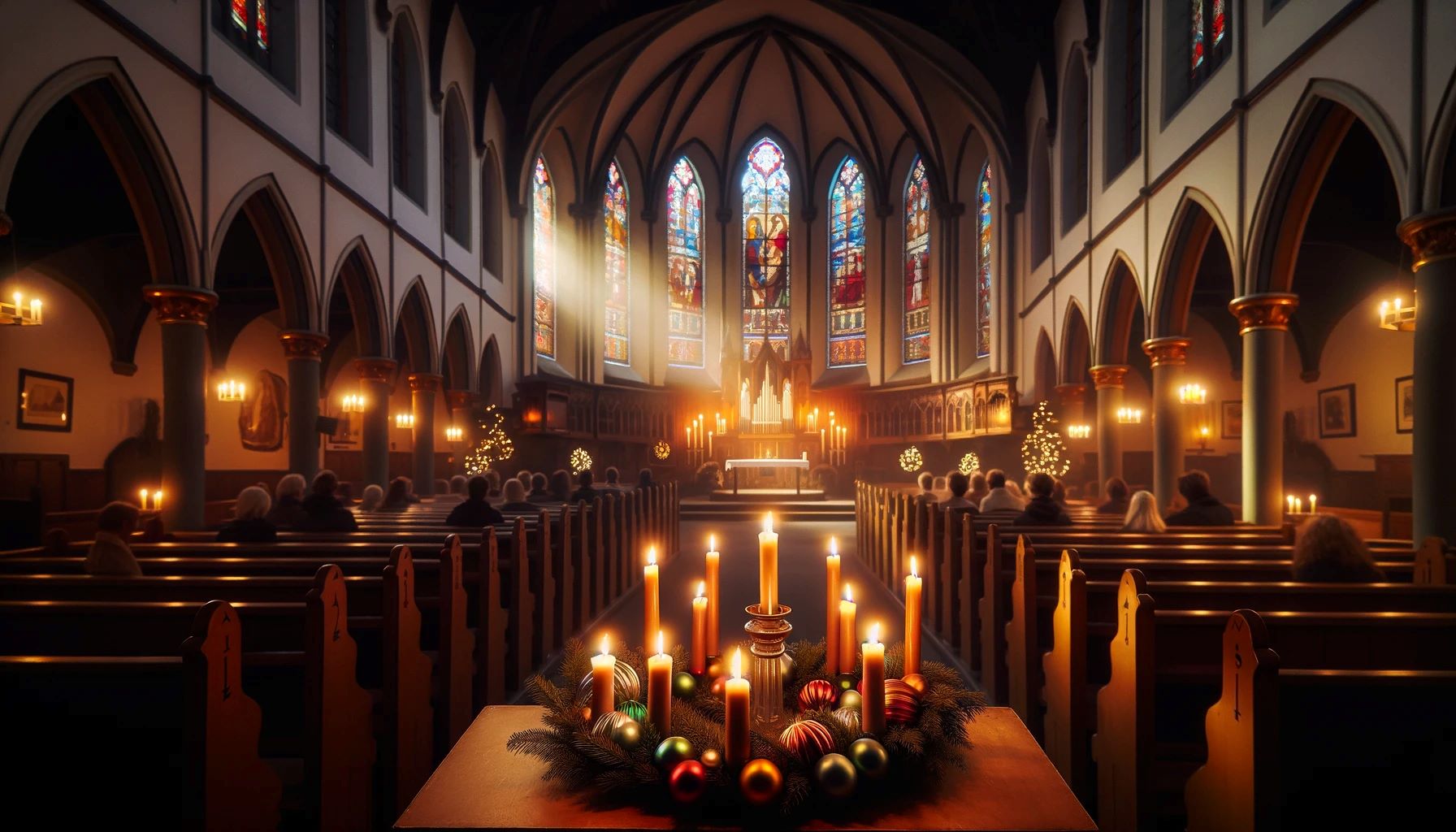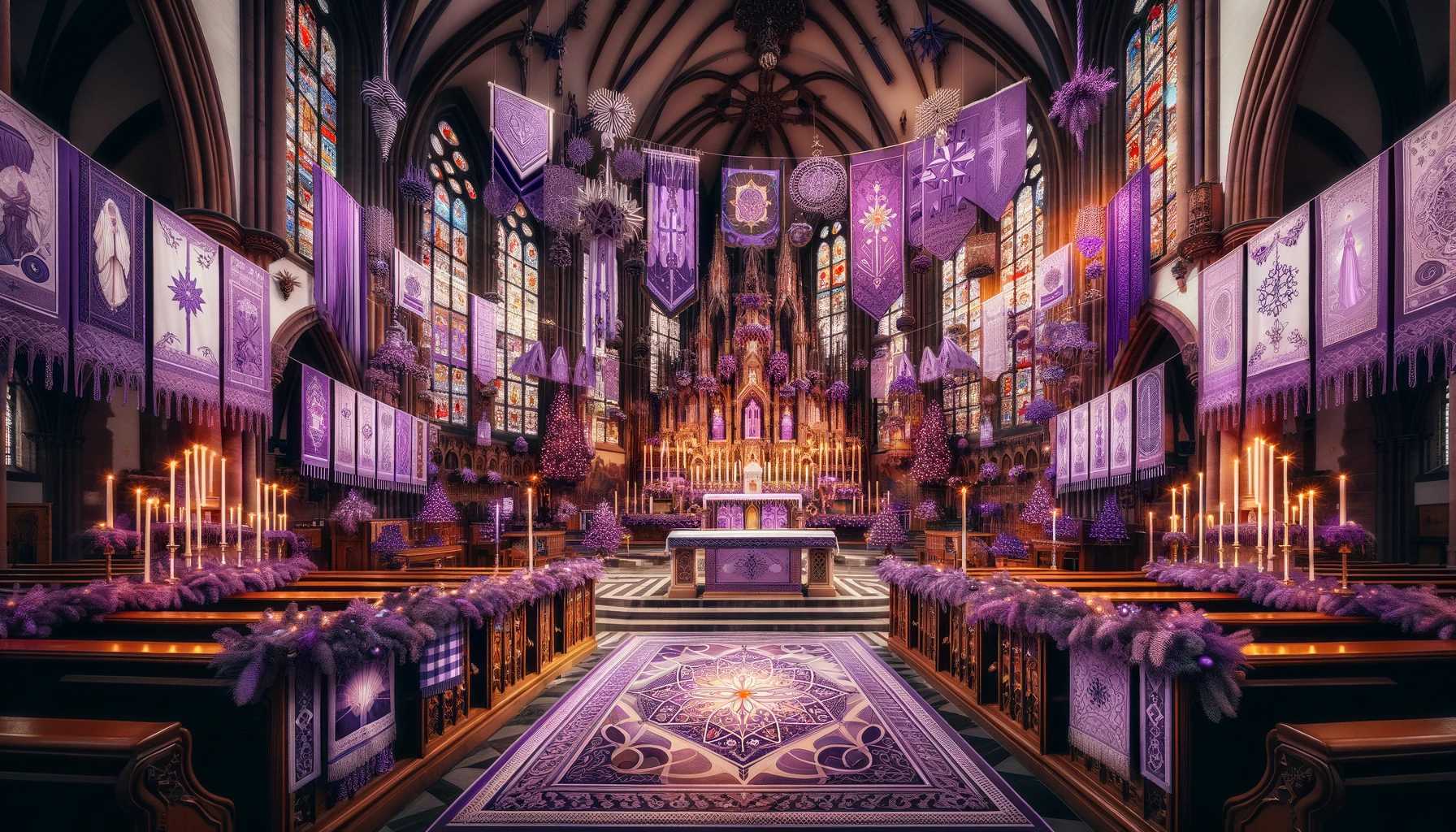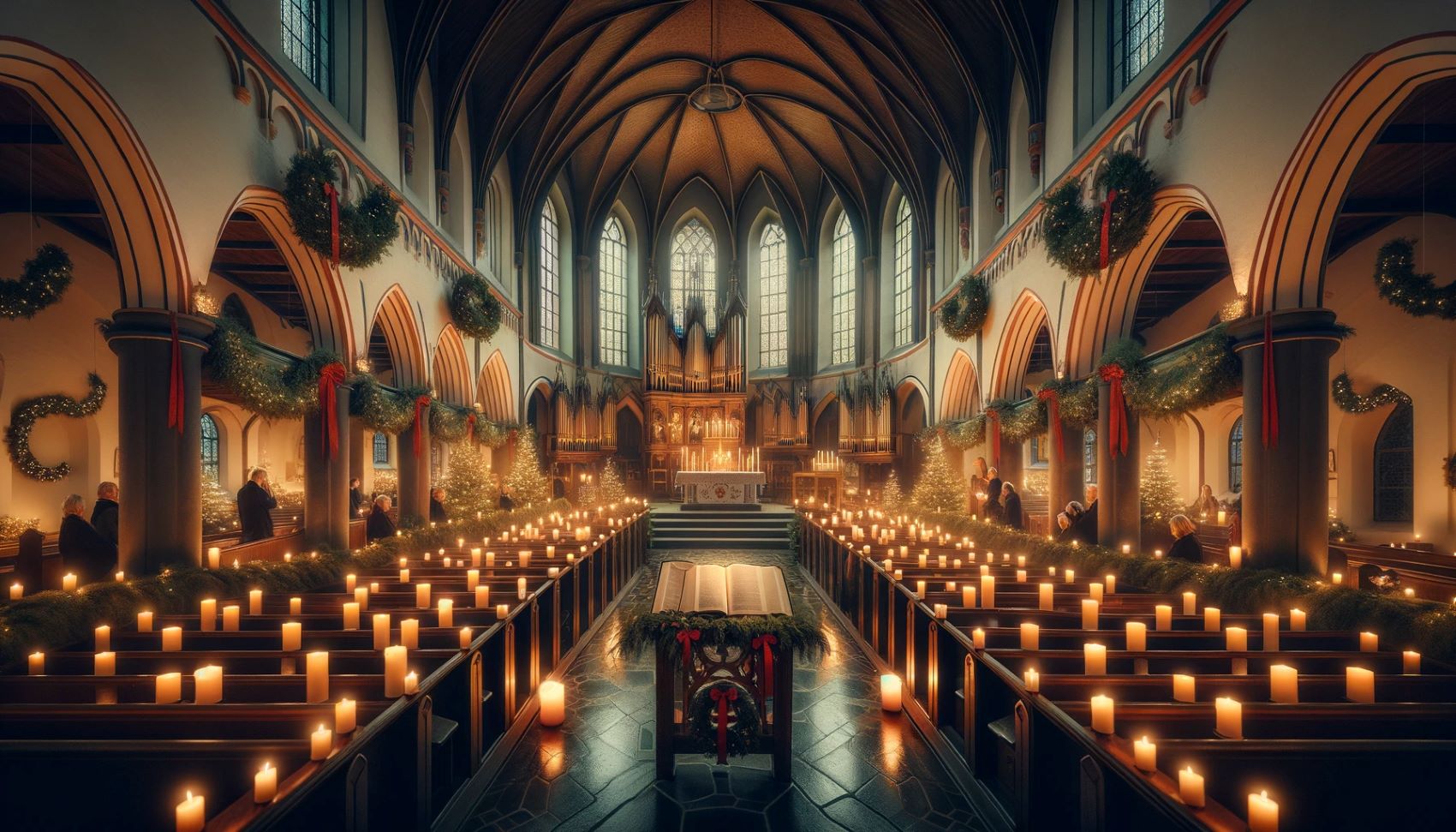Home>Special Themes>What Is Advent Catholic
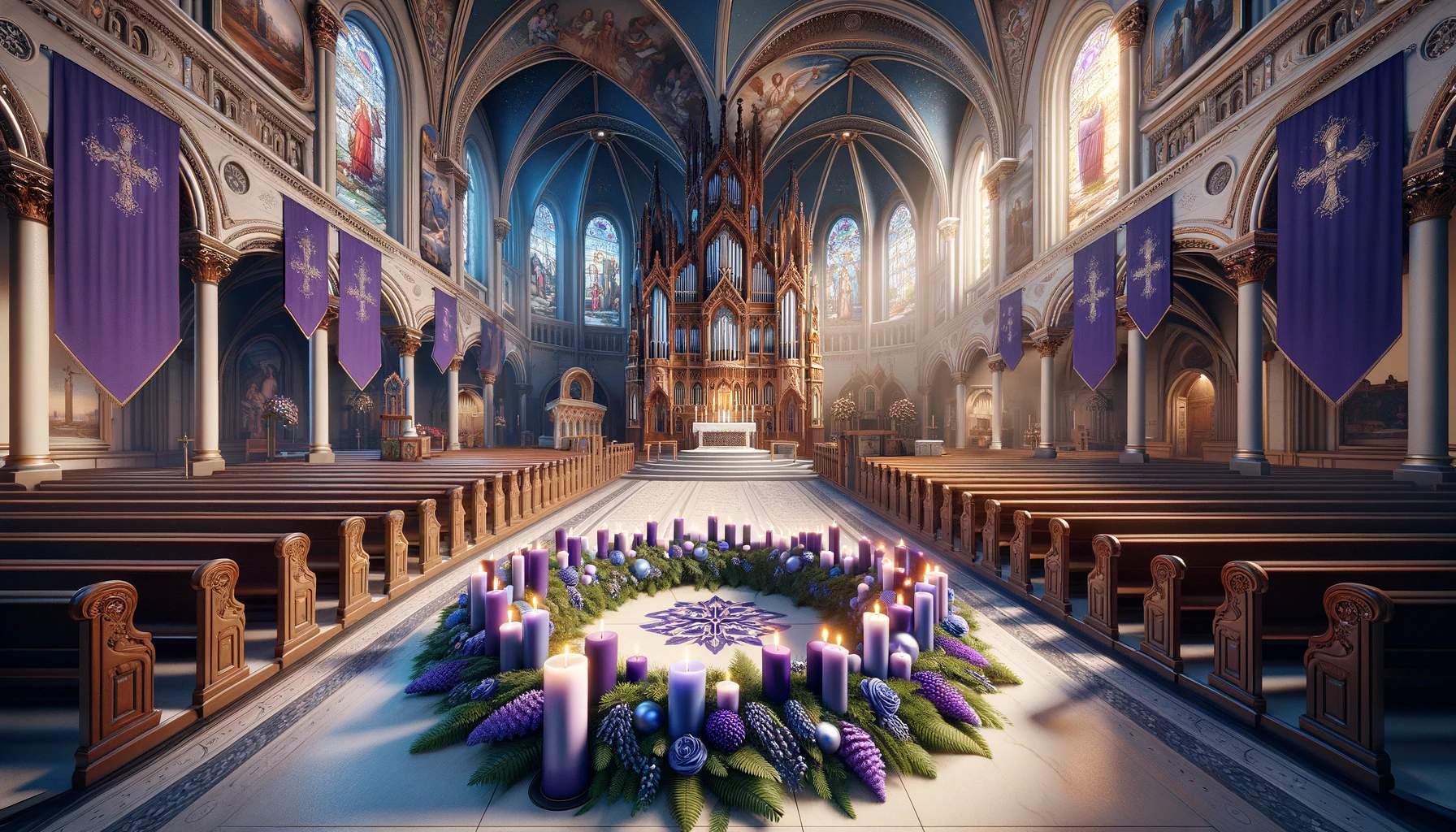

Special Themes
What Is Advent Catholic
Published: February 12, 2024
Peter Smith, Editorial Director at Christian.net, combines deep insights into faith, politics, and culture to lead content creation that resonates widely. Awarded for his contributions to religious discourse, he previously headed a major organization for religious communicators, enhancing dialogue on faith's societal impacts.
Learn about the significance of Advent in the Catholic faith and its special themes. Explore the traditions and customs associated with this important liturgical season.
(Many of the links in this article redirect to a specific reviewed product. Your purchase of these products through affiliate links helps to generate commission for Christian.net, at no extra cost. Learn more)
Table of Contents
Introduction
Advent is a significant and cherished time in the Catholic Church, marking the beginning of the liturgical year and preparing the faithful for the celebration of the birth of Jesus Christ at Christmas. This period, which typically spans four weeks, is a time of joyful anticipation, reflection, and spiritual preparation. The word "Advent" is derived from the Latin word "adventus," meaning "coming" or "arrival," and it encapsulates the sense of expectancy and hope that defines this season.
During Advent, Catholics are called to embrace a spirit of watchfulness and readiness, eagerly awaiting the commemoration of the birth of Jesus while also looking forward to His promised return. It serves as a time of spiritual renewal, encouraging believers to reflect on the profound significance of the Incarnation and to prepare their hearts to welcome Christ into their lives in a deeper and more profound way.
As the days grow shorter and the nights longer, the lighting of the Advent wreath and the opening of the Advent calendar serve as tangible reminders of the approaching Christmas season. These cherished traditions, along with the rich symbolism and rituals associated with Advent, create a sense of anticipation and excitement that permeates the hearts and homes of Catholics around the world.
The observance of Advent also provides an opportunity for believers to engage in acts of charity, kindness, and generosity, reflecting the spirit of giving and selflessness embodied by the life and teachings of Jesus. Through prayer, fasting, and almsgiving, Catholics seek to cultivate a spirit of humility and gratitude, preparing themselves to receive the greatest gift of all – the birth of the Savior.
In the following sections, we will delve into the history, meaning, and traditions of Advent in the Catholic Church, exploring the profound significance of this sacred season and the enduring impact it has on the faith and spiritual journey of believers. Join us on this enlightening journey through the timeless traditions and timeless truths of Advent in the Catholic faith.
History of Advent in the Catholic Church
The history of Advent in the Catholic Church can be traced back to the early centuries of Christianity. While the specific origins of Advent as a liturgical season are not definitively documented, its roots can be found in the early Christian practices of preparing for the celebration of the Nativity of Jesus Christ.
The earliest references to a period of preparation before Christmas can be found in the writings of St. Athanasius of Alexandria and St. Gregory of Tours, both of whom described a period of fasting and spiritual reflection leading up to the feast of the Nativity. However, it was not until the 6th century that the observance of Advent as a distinct liturgical season began to take shape in the Western Church.
During this formative period, Advent was characterized by a sense of penitential preparation, akin to the season of Lent. It was a time for believers to engage in acts of fasting, prayer, and almsgiving, as they prepared their hearts and minds for the coming of Christ. The focus was not only on the historical event of Jesus' birth but also on the anticipation of His second coming, emphasizing the dual nature of Advent as a season of both joyful expectation and solemn reflection.
Over time, the observance of Advent evolved to incorporate a more structured liturgical framework, including the use of specific prayers, readings, and liturgical colors. The four-week duration of Advent, symbolizing the four centuries of waiting for the Messiah as prophesied in the Old Testament, became firmly established, providing a structured period for spiritual preparation and anticipation.
In the 20th century, the liturgical reforms of the Second Vatican Council further enriched the observance of Advent in the Catholic Church. The revised liturgical calendar and the introduction of new prayers and rituals deepened the spiritual significance of the season, emphasizing the themes of hope, peace, joy, and love as embodied by the Advent wreath and the readings from the prophets and the Gospels.
Today, Advent remains a cherished and integral part of the liturgical year in the Catholic Church, inviting believers to journey through the rich tapestry of salvation history, from the longing of the Old Testament prophets to the fulfillment of God's promise in the birth of Jesus Christ. It continues to serve as a time of spiritual renewal, inviting the faithful to embrace the timeless message of hope and redemption as they prepare to welcome the Savior into their hearts and homes once again.
Meaning and Significance of Advent
Advent holds profound meaning and significance within the Catholic faith, serving as a period of spiritual preparation and joyful anticipation. At its core, Advent symbolizes the dual nature of the Christian journey – looking back with gratitude at the historical event of Jesus' birth and looking forward with hope to His promised return.
The primary significance of Advent lies in its invitation to believers to enter into a deeper awareness of the profound mystery of the Incarnation. It is a time to reflect on the awe-inspiring truth that God, in His infinite love and mercy, chose to enter into human history as a vulnerable infant, bringing the light of salvation into a world shrouded in darkness. This act of divine condescension, wherein the Creator of the universe humbly took on human flesh, underscores the immeasurable love and compassion of God for His creation.
Furthermore, Advent serves as a poignant reminder of the enduring message of hope and redemption that lies at the heart of the Christian faith. As believers journey through the four weeks of Advent, they are called to embrace the virtues of hope, peace, joy, and love, symbolized by the lighting of the Advent wreath. Each candle represents a distinct aspect of the spiritual journey, culminating in the illumination of the Christ candle on Christmas Eve, signifying the arrival of the long-awaited Messiah.
The season of Advent also holds profound significance in its emphasis on spiritual preparation and readiness. It calls believers to examine their hearts, to make room for the presence of Christ, and to cultivate a spirit of watchfulness and expectation. Through prayer, reflection, and acts of charity, Catholics are encouraged to foster a spirit of inner renewal, preparing themselves to receive the gift of Christ's presence in a deeper and more profound way.
Moreover, Advent carries a universal message of hope and anticipation, transcending cultural and geographical boundaries. It unites believers across the globe in a shared journey of faith, reminding them of the timeless truth that Christ's coming brings light to the darkest corners of the world and offers the promise of redemption to all who seek Him.
In essence, the meaning and significance of Advent in the Catholic Church can be encapsulated in its ability to awaken hearts to the transformative power of Christ's birth, to inspire a spirit of joyful expectation, and to kindle the flame of hope that continues to burn brightly in the hearts of believers throughout the ages.
Advent Traditions in the Catholic Church
Advent is rich in traditions that hold deep spiritual significance and serve to enrich the faith of Catholics around the world. These cherished customs, passed down through generations, create a sense of anticipation and reverence as believers prepare to celebrate the birth of Jesus Christ. The following traditions are integral to the observance of Advent in the Catholic Church:
The Advent Wreath
The Advent wreath is a beloved symbol of the season, consisting of a circular wreath adorned with four candles, typically three purple and one pink, arranged around the circumference. Each candle represents a week of Advent, with the purple candles symbolizing penitence and preparation, and the pink candle signifying the third Sunday of Advent, known as Gaudete Sunday, a day of rejoicing. The lighting of the candles, one for each week of Advent, serves as a visual representation of the increasing anticipation and illumination as Christmas draws near. The Christ candle, often white, placed in the center of the wreath, is lit on Christmas Eve, symbolizing the arrival of the Light of the World.
Read more: What Do Catholics Do For Advent
The Advent Calendar
The Advent calendar is a cherished tradition that helps believers count down the days to Christmas while engaging in daily reflections and prayers. Traditionally, Advent calendars featured small doors or windows, each concealing a picture, a Bible verse, or a piece of chocolate. Modern variations include digital calendars and interactive apps, offering a diverse range of daily devotions, reflections, and activities for individuals and families to deepen their spiritual journey throughout the Advent season.
The Jesse Tree
The Jesse Tree is a symbolic representation of the genealogy of Jesus, tracing His lineage back to Jesse, the father of King David. This tradition involves the daily reading of Scripture passages and the hanging of ornaments on a tree, each depicting a significant person or event from salvation history. The Jesse Tree serves as a visual reminder of God's faithfulness throughout the ages and the fulfillment of His promise to send a Savior, culminating in the birth of Jesus on Christmas Day.
These traditions, rooted in the rich tapestry of Catholic heritage, serve to deepen the spiritual significance of Advent, fostering a sense of unity, reverence, and joyful anticipation among believers as they prepare to celebrate the birth of the Savior. Through these timeless customs, Catholics are invited to embark on a journey of faith, reflection, and spiritual renewal, embracing the enduring message of hope and redemption that lies at the heart of the Advent season.
The Advent Wreath
The Advent wreath is a cherished and symbolic tradition deeply rooted in the observance of Advent in the Catholic Church. Comprising a circular wreath adorned with four candles, the Advent wreath serves as a visual and spiritual focal point during the four weeks leading up to Christmas. Each element of the wreath carries profound significance, enriching the spiritual journey of believers as they prepare to celebrate the birth of Jesus Christ.
The circular shape of the wreath represents eternity and the unending nature of God's love and mercy. It serves as a powerful reminder of the timeless nature of the divine, transcending the boundaries of time and space. This symbolism underscores the eternal significance of the Advent season, inviting believers to enter into a deeper awareness of the enduring message of hope and redemption embodied by the birth of Jesus.
The four candles adorning the wreath hold distinct meanings, each corresponding to a week of Advent. Traditionally, three purple candles and one pink candle are used, with the pink candle symbolizing the third Sunday of Advent, known as Gaudete Sunday, a day of rejoicing amidst the penitential preparation. The purple candles represent the themes of penitence, preparation, and expectation, reflecting the solemn yet hopeful nature of the season. As each week of Advent unfolds, a new candle is lit, signifying the increasing anticipation and illumination as Christmas draws near.
The lighting of the candles holds profound spiritual significance, serving as a tangible representation of the journey from darkness to light. As the weeks progress, the increasing number of lit candles symbolizes the growing anticipation and joy as believers prepare to welcome the Light of the World. The Christ candle, often white and placed in the center of the wreath, remains unlit until Christmas Eve, when it is ceremoniously ignited, signifying the arrival of the long-awaited Messiah and the dawning of the Christmas celebration.
The Advent wreath, with its timeless symbolism and ritualistic lighting of candles, creates a sacred space for reflection, prayer, and spiritual contemplation. It serves as a visual and tangible expression of the profound themes of Advent, inviting believers to journey through the season with a spirit of watchfulness, hope, and joyful expectation. Through this cherished tradition, Catholics are reminded of the enduring message of Christ's birth and the transformative power of His presence in their lives.
In essence, the Advent wreath stands as a poignant symbol of the timeless truths and enduring hope that define the Advent season, inviting believers to embrace the profound significance of the Incarnation and to prepare their hearts to welcome the Savior into their lives once again.
The Advent Calendar
The Advent calendar is a cherished and integral tradition that holds a special place in the observance of Advent in the Catholic Church. This beloved custom serves as a tangible and engaging way for believers to count down the days to Christmas while immersing themselves in daily reflections, prayers, and acts of spiritual devotion. The Advent calendar, with its rich history and diverse variations, plays a significant role in deepening the spiritual journey of individuals and families as they prepare to celebrate the birth of Jesus Christ.
Traditionally, Advent calendars featured a series of small doors or windows, each concealing a hidden surprise, such as a picture, a Bible verse, or a small treat like a piece of chocolate. These daily discoveries served as a source of joyful anticipation, inviting participants to engage in a daily ritual of opening a new window and discovering the hidden treasure within. This simple yet meaningful act created a sense of excitement and expectancy, mirroring the broader themes of Advent as a time of watchfulness and readiness.
In modern times, the Advent calendar has evolved to encompass a wide array of creative and interactive formats. From traditional paper calendars to digital versions and interactive apps, the Advent calendar offers a diverse range of daily devotions, reflections, and activities designed to deepen the spiritual experience of the season. These contemporary adaptations provide a dynamic and engaging platform for individuals and families to embark on a daily journey of faith, prayer, and contemplation as they prepare their hearts to welcome the Savior.
The Advent calendar serves as a powerful tool for fostering a sense of unity and shared experience within the faith community. It unites believers of all ages in a collective journey of spiritual preparation, inviting them to embark on a daily pilgrimage of prayer and reflection. Whether through traditional paper calendars displayed in homes and churches or through digital platforms accessible to a global audience, the Advent calendar creates a sense of connection and shared purpose, transcending geographical boundaries and cultural differences.
Moreover, the Advent calendar offers a unique opportunity for believers to engage in acts of spiritual discipline and devotion throughout the season. By setting aside a few moments each day to open a new window, read a Scripture passage, or engage in a reflective prayer, participants are invited to cultivate a spirit of inner renewal and anticipation. This intentional practice of daily devotion serves to deepen the spiritual significance of Advent, fostering a sense of reverence and joyful expectation as Christmas draws near.
In essence, the Advent calendar stands as a cherished tradition that enriches the spiritual journey of believers, young and old, as they prepare to celebrate the birth of Jesus Christ. Through its diverse formats and engaging content, the Advent calendar serves as a timeless and beloved companion, guiding individuals and families through a season of prayer, reflection, and joyful anticipation, ultimately leading them to the wondrous celebration of the Nativity of the Savior.
The Jesse Tree
The Jesse Tree is a cherished and symbolic tradition deeply rooted in the observance of Advent in the Catholic Church. This tradition traces its origins to the Old Testament prophecy of Isaiah, which proclaims, "A shoot will spring from the stock of Jesse, and a new branch will grow from his roots" (Isaiah 11:1). The imagery of the "Jesse Tree" symbolizes the genealogy of Jesus, tracing His lineage back to Jesse, the father of King David. This rich and profound tradition involves the daily reading of Scripture passages and the hanging of ornaments on a tree, each depicting a significant person or event from salvation history.
The Jesse Tree serves as a visual and tangible representation of God's faithfulness throughout the ages and the fulfillment of His promise to send a Savior. Each ornament on the tree corresponds to a specific Old Testament figure or event, such as Adam and Eve, Noah and the Ark, Abraham and Sarah, Moses and the Exodus, and many others. These ornaments serve as poignant reminders of the unfolding narrative of salvation history, leading up to the birth of Jesus Christ.
The act of daily Scripture reading and ornament hanging creates a sense of continuity and anticipation as believers journey through the Advent season. It provides a unique opportunity for individuals and families to immerse themselves in the rich tapestry of biblical narratives, connecting the stories of the Old Testament to the fulfillment of God's promise in the birth of Jesus. Each ornament serves as a visual symbol of the enduring hope and anticipation that characterized the period leading up to the Incarnation.
The Jesse Tree tradition fosters a deep sense of unity and shared experience within the faith community. It invites believers to engage in a collective pilgrimage through salvation history, reflecting on the faithfulness of God and the unfolding plan of redemption. This shared journey creates a sense of connection and continuity, transcending generational and cultural boundaries, as believers of all ages come together to celebrate the timeless truths of the Advent season.
In essence, the Jesse Tree stands as a powerful and evocative tradition that enriches the spiritual journey of believers, inviting them to immerse themselves in the timeless narrative of God's redemptive plan. Through its daily readings and symbolic ornaments, the Jesse Tree serves as a poignant reminder of the enduring hope and anticipation that culminates in the wondrous celebration of the Nativity of the Savior.
Conclusion
In conclusion, the observance of Advent in the Catholic Church stands as a timeless and cherished tradition that holds profound significance in the spiritual journey of believers. As the faithful embark on the four-week pilgrimage of Advent, they are invited to embrace a spirit of joyful anticipation, reflection, and spiritual preparation, culminating in the celebration of the birth of Jesus Christ at Christmas.
Throughout the history of the Catholic Church, Advent has served as a period of spiritual renewal, inviting believers to journey through the rich tapestry of salvation history, from the longing of the Old Testament prophets to the fulfillment of God's promise in the birth of Jesus. The observance of Advent has evolved over the centuries, incorporating structured liturgical frameworks, prayers, and rituals that deepen the spiritual significance of the season.
The meaning and significance of Advent are rooted in its ability to awaken hearts to the transformative power of Christ's birth, to inspire a spirit of joyful expectation, and to kindle the flame of hope that continues to burn brightly in the hearts of believers throughout the ages. It symbolizes the dual nature of the Christian journey – looking back with gratitude at the historical event of Jesus' birth and looking forward with hope to His promised return.
The traditions of the Advent wreath, the Advent calendar, and the Jesse Tree serve as poignant reminders of the enduring message of hope and redemption that lies at the heart of the Advent season. These cherished customs create a sense of anticipation and reverence, fostering a spirit of unity and shared experience within the faith community.
As believers engage in acts of charity, kindness, and generosity during Advent, they reflect the spirit of giving and selflessness embodied by the life and teachings of Jesus. Through prayer, fasting, and almsgiving, Catholics seek to cultivate a spirit of humility and gratitude, preparing themselves to receive the greatest gift of all – the birth of the Savior.
In essence, the observance of Advent in the Catholic Church continues to resonate with believers around the world, inviting them to journey through a season of hope, anticipation, and spiritual renewal. It stands as a testament to the enduring message of God's love and the timeless truth that Christ's coming brings light to the darkest corners of the world and offers the promise of redemption to all who seek Him. As the faithful prepare to celebrate the birth of Jesus, the spirit of Advent serves as a guiding light, illuminating the path to a deeper and more profound encounter with the Savior.
